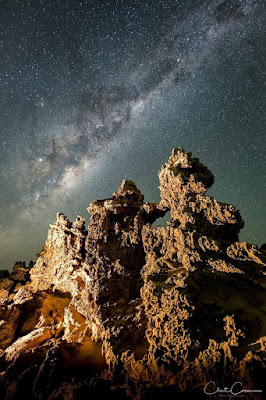Wide-field Astrophotography with a Vixen Polarie

To take a photo like this, you can use a simple tripod and a camera. But you can’t expose for longer than about 30 seconds (depending on your focal length) before you start to get star trails. These can look nice, but if you don’t want them, it’s awful. You have to stop the stars’ apparent motion.
A gigantic equatorial mount under your camera would do the job, but that's bulky and expensive. What's worse, your camera would look a bit ridiculous on top of a thumping great machine.
You need a simpler and less expensive gadget that tracks the stars. There are several types out there, such as the Sky-Watcher Star Adventurer, or the Vixen Polarie.

You align them to the South Celestial Pole, and once they’re set up, they enable you to take photos of the sky using a camera and a normal lens. To demonstrate, I used a Polarie to photograph some stars, and photographed the same field with the Polarie turned off. I’ve attached the photos, and the difference is clear. With the Polarie activated, the stars are nice dots, which is so much better than the streaks when the Polarie isn’t going. The mount is moving the camera to counteract the Earth’s spin.


Last year, I took a Polarie up to the dark sky site to get a photo of the Large Magellanic Cloud. I set it up on my tripod (you can see it in the photo), aligned it carefully using my phone’s compass and inclinometer, and set the camera to take two-minute shots.

The camera worked away on its own over the course of the evening, and took about 100 photos while I worked with my telescope. When I got back to Melbourne, I processed these images into the one attached. It’s no award-winner, mainly due to the chromatic aberration in the old lens I used.
I'm quite happy - you can see the Tarantula Nebula in there quite nicely. It's the bright blob right of centre.

Comments
Post a Comment